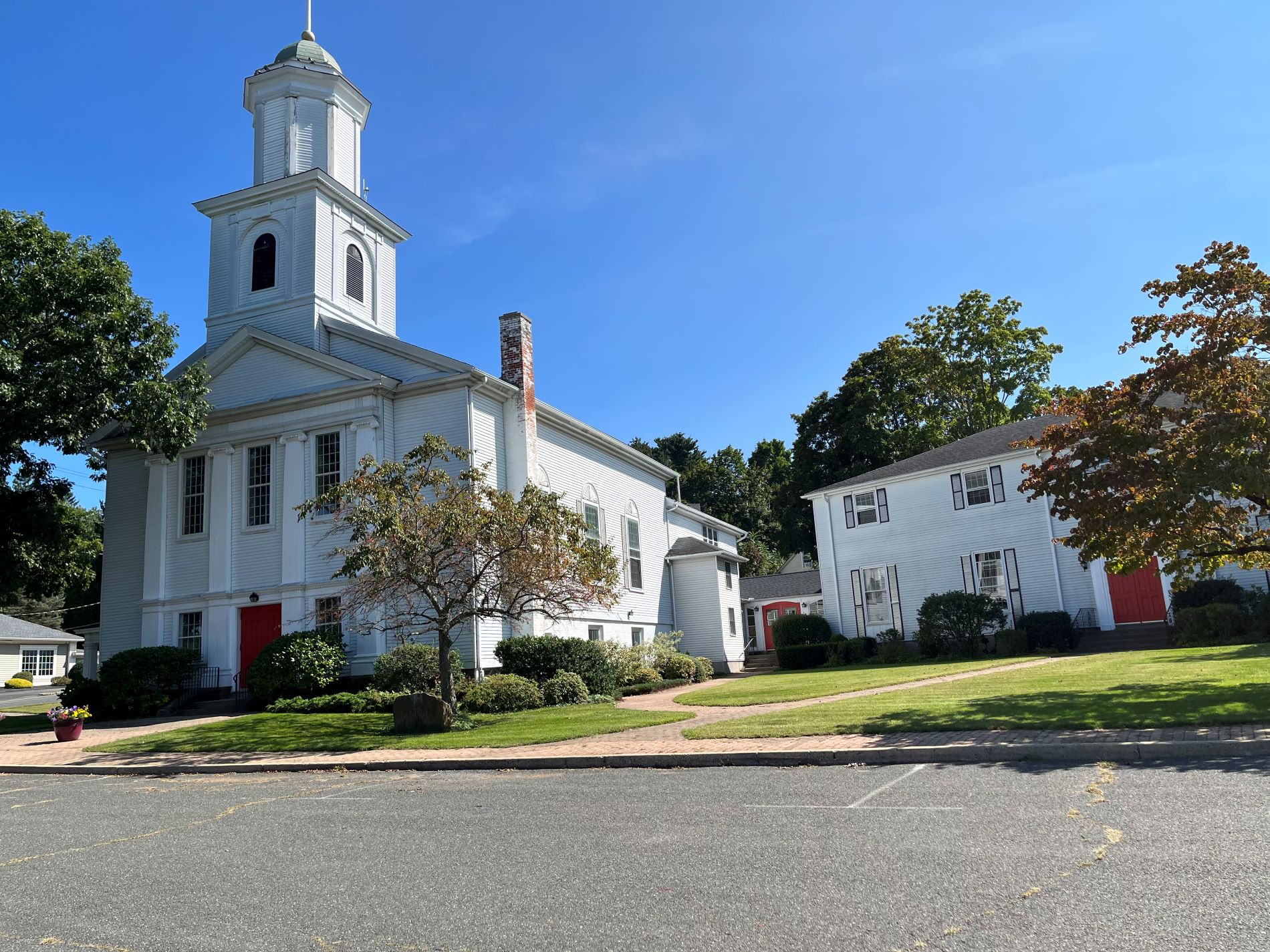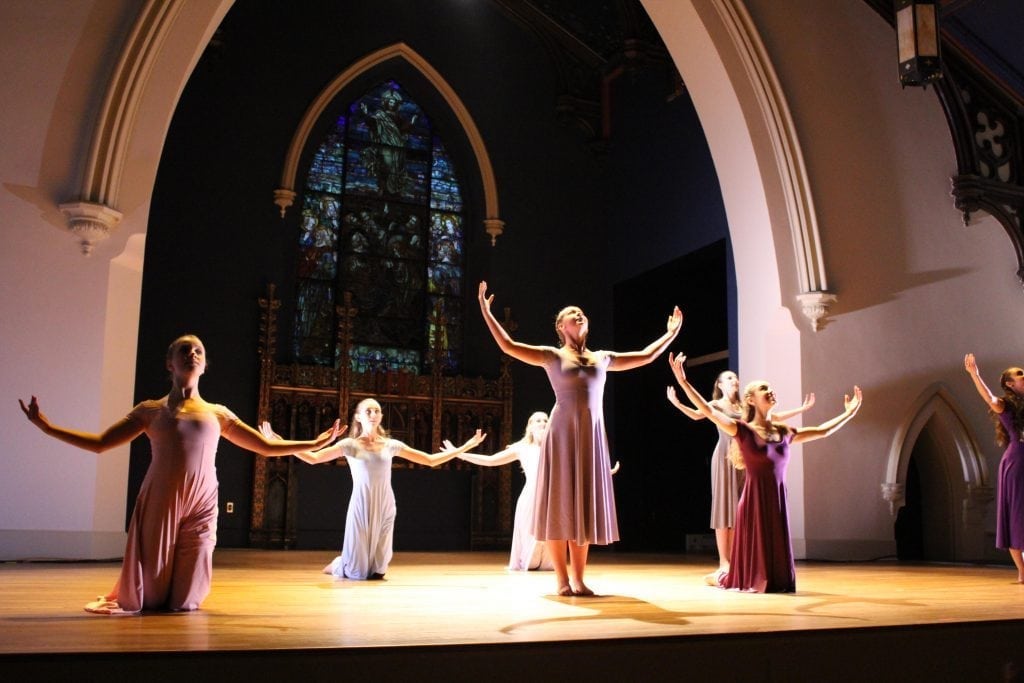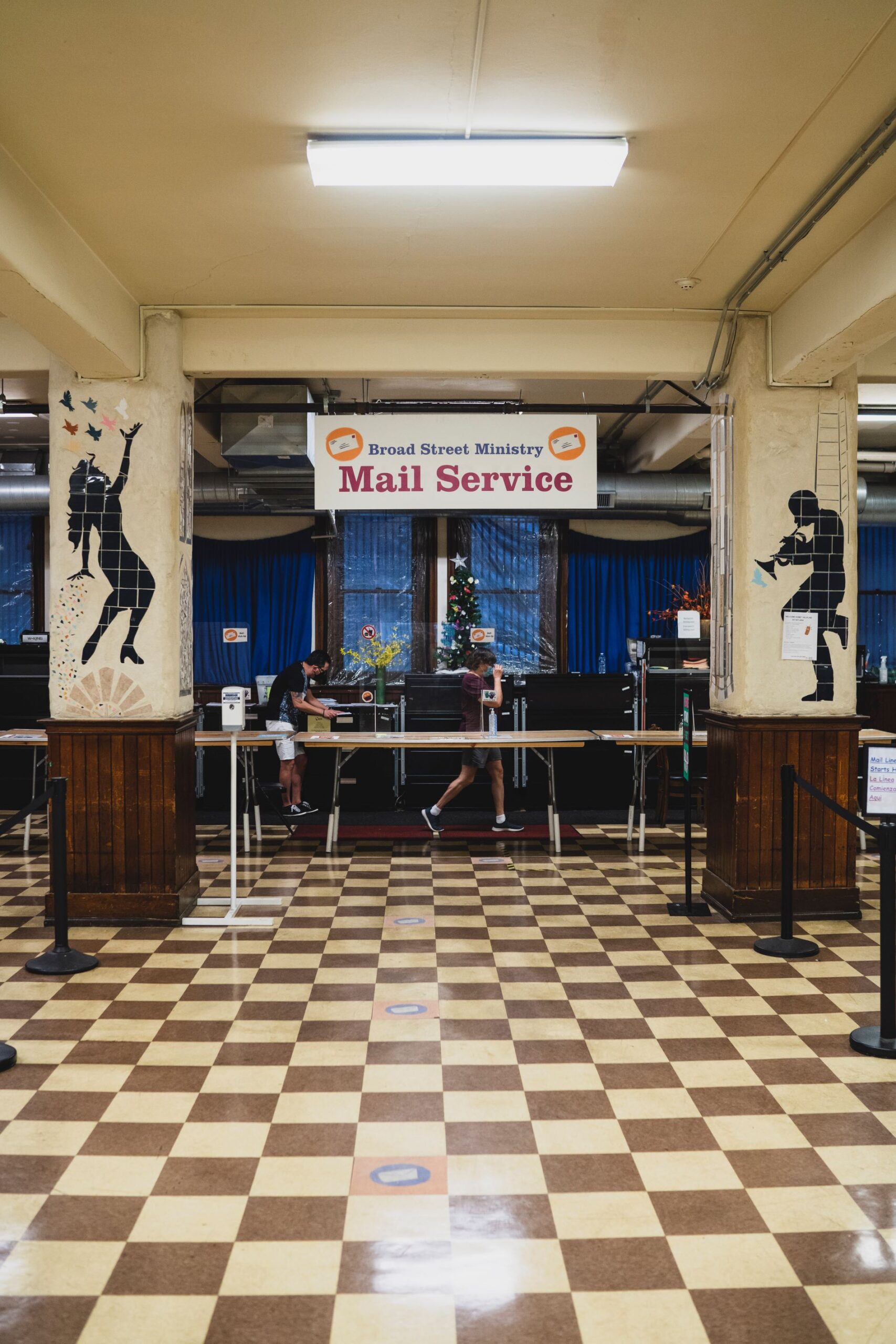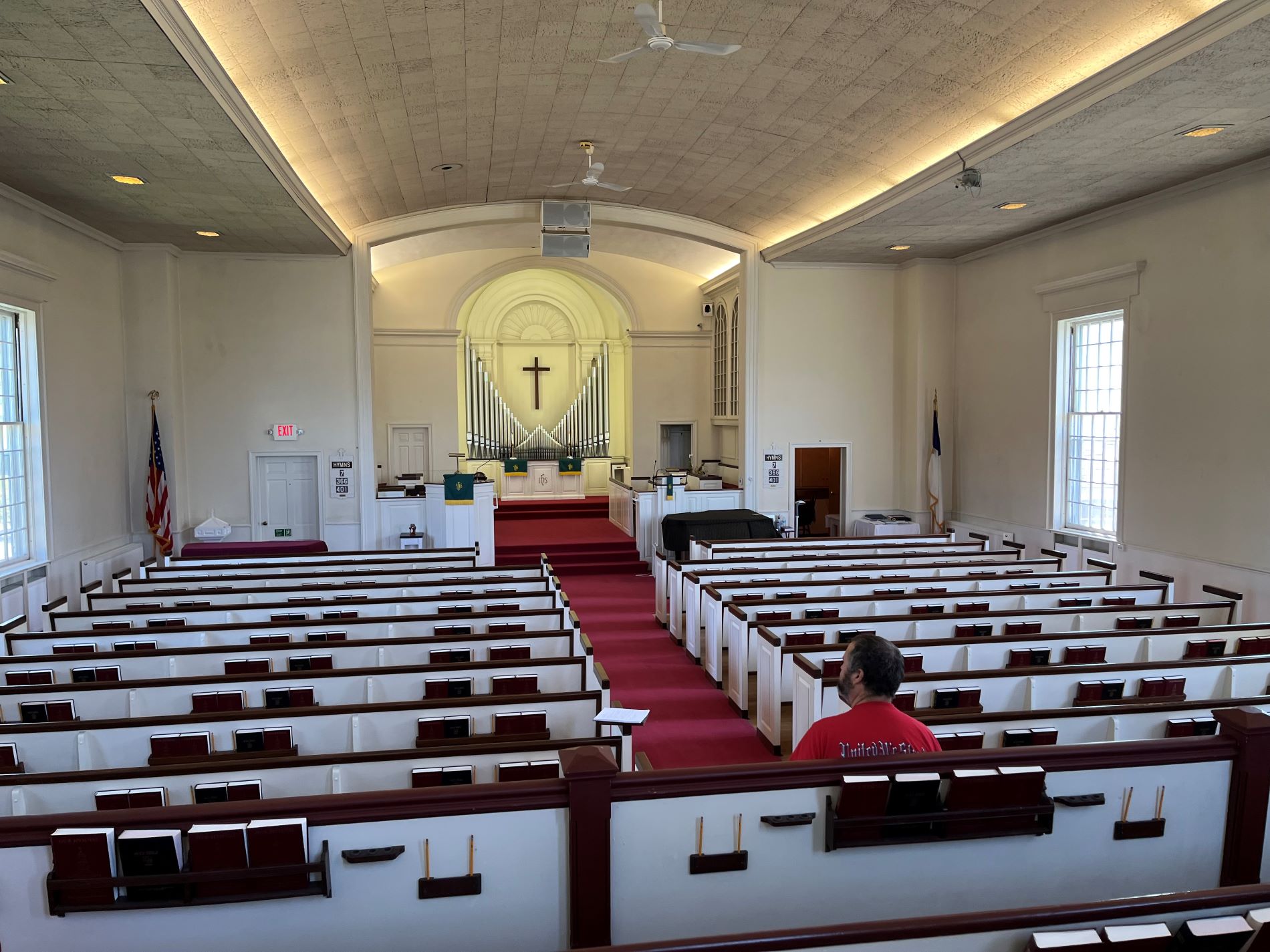By Dana Dabek, Director of Transition Services, Partners for Sacred Place and Rochelle Stackhouse, Senior Director of Programs, Partners for Sacred Places
Before the pandemic began, the leaders of the First Congregational Church of East Longmeadow, Massachusetts, could see the writing on the wall. Their membership and attendance at worship had fallen, they could no longer afford a full-time pastor, and their historic building needed repair and modernization. They could see only what they had lost and felt low on energy and bereft of purpose. They feared they might need to sell the building and dissolve the congregation. Then their interim pastor attended a webinar on churches “in transition,” and a glimmer of possibility began to emerge.
East Longmeadow is not alone. By March 2020 many US religious communities across a range of traditions had already experienced a long, slow decline in membership and worship attendance. Though reliable statistics are hard to find, Lifeway Institute estimated that in 2019 approximately 4,500 Protestant churches closed in the United States. The Roman Catholic Church has consolidated numerous congregations throughout the country, and both Reform and Conservative synagogues in some communities face closure. As COVID-19 cases increased in 2020, most places of worship ceased holding in-person events and meetings, a situation that lasted for months or years and exacerbated an already challenging environment. While many congregations were able to pivot to live-streaming worship services during the pandemic as a way to engender a sense of normalcy, the option of remote worship has encouraged some congregants to continue “attending” virtually. A recent survey finds some rebound in attendance and giving, especially among churches with hybrid worship, but both are trending below prepandemic levels.
As financial and human resources dwindled, some congregations realized they did not need — nor could they support — their property, or parts of it, especially if it was older and required significant maintenance or repair. These congregations now face a significant change in their relationship with their property: in Partners for Sacred Places parlance, they are “in transition.” In cities and suburbs, small towns and rural areas, faith communities face challenging decisions about what to do with properties that have become too large and too expensive to maintain, even if the congregation still has vitality and a sense of mission.
Although thousands of congregations across the country confront these same issues, individual faith communities like East Longmeadow often feel alone in the process. Judicatories may be understaffed or under-resourced, and most congregations are unaware of organizations such as Partners that may be able to help them navigate unfamiliar waters. Further complicating the situation is that many volunteers and leaders, both clergy and lay, are weary from dealing with COVID issues and facing their own grief at the potential loss of their spiritual homes. That sense of grief is important to acknowledge: weariness and grief may lead a congregation to make quick decisions, often resulting in the transition of property with important historic and civic value in a direction that does not align with the congregation’s mission.
After attending the webinar, the leadership of First Congregational East Longmeadow decided to engage in a strategic visioning process to help them discern possible futures for their property, which is central to the town and a place of beauty with a long history of community service. They opened their imaginations to explore what the future mission of their property might be.
Many faith communities develop mission or vision statements to help guide their life together. Very few of those statements mention the property as a vessel or tool for the planned mission. Sacred places provide space for worship, education of children and adults, life-cycle events (weddings, funerals), social events, community services (food pantries, meeting space for twelve-step groups, counseling centers), and public gatherings, among many other uses. All of these reflect the mission of the faith community. Further, these uses indicate that the property has a mission congruent with that of the congregation. They are essential in many ways to the well-being of the community around the property. East Longmeadow’s buildings hosted a variety of Scout troops, twelve-step groups, youth groups, senior citizen services, social events, and performing arts organizations. If that space were lost, these services might struggle to find other places to call home. The leaders enthusiastically agreed that their property needed to continue as a safe, inviting space to the community. They identified their property’s mission as a place of “connection, community, and caring.”
When a congregation needs to transition all or part of its property, it may be approached by developers interested in purchasing the property to build market-rate housing or retail spaces, especially if it is located in an area where real estate values have increased. But once a congregation like East Longmeadow understands that its property has a mission in the community and civic value, the following questions can help clarify next steps: In what ways does the building serve the community, large and small? How can the (often central) location of the building and surrounding property be leveraged for greater, mission-aligned community benefit? What are the unmet needs of our community? Who could use space but doesn’t know the space exists or is available to nonmembers? Though some groups who previously used space in the building have folded because of COVID, others exist who now need reasonably priced space more than ever.
Congregations often do not have marketing expertise or enough volunteers to seek out new space users. However, partnerships with social services, affordable housing advocates, health care agencies, childcare providers, and arts organizations all still present opportunities. Instead of fighting the impact of remote work, congregations might embrace it by setting up co-working spaces or small-business incubation centers in unused office space or Sunday School classrooms. “Development” of a property need not mean tearing down old buildings and constructing new ones. It can mean reimagining and repurposing the buildings, including the possibility of maintaining space for an existing congregation to continue to worship and serve.
To prepare for such reimagining and connecting with new community partners, however, congregations must begin by taking small steps to make the spaces welcoming and inviting to potential partners and tenants. East Longmeadow engaged in a major decluttering of the entire building, a necessary task for most congregations, and they painted their fellowship hall. After sprucing up the building, their excitement grew about what their space could offer to new users. They kept painting! By the time they invited community leaders into the space for a tour and an asset-mapping activity, not only did the rooms look fresh, but the outlook of the congregation had expanded. After they engaged with community leaders — one of whom said, “This space is too important to our town to lose” — they understood that both they and their property had a purpose. They found a renewed sense of mission and discovered community partners eager to work with them. They now hope to host an anchor tenant, which will help their financial needs, serve the community, and allow them to continue to worship and work in their beloved meetinghouse.
While the challenges to congregations and their properties are significant, opportunities also abound for congregations to reimagine their properties and make new connections in their neighborhoods, towns, and cities to preserve them for active community use as well as worship, education, fellowship, and service for the congregation. “Transition” need not be a synonym for an ending but a pathway to new beginnings.




